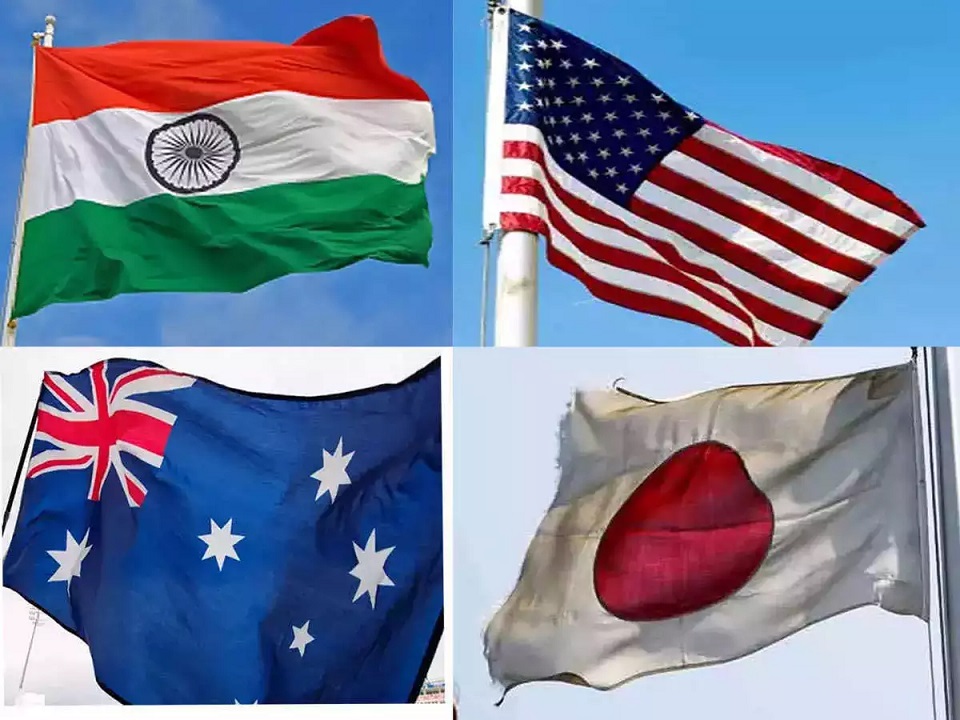The Biden administration unveiled its new Indo-Pacific Strategy, outlining Washington’s objectives in the region, America’s role in advancing a free and open Indo-Pacific, expanding connectivity throughout the region and beyond, promoting regional prosperity, bolstering regional security, and enhancing regional resilience to a range of transnational threats and challenges. According to a fact sheet on the policy, the administration’s objective is to “more firmly embed the United States in the Indo-Pacific and strengthen the region in the process” by “ongoing and creative collaboration with allies, partners, and institutions, both inside and outside the region.” Senior administration officials stated in a background press briefing on the strategy that the strategy has two primary goals: “to strengthen the US role in the region;” and “to build the collective capacity to meet 21st-century challenges and seize opportunities, whether they relate to climate, People’s Republic of China (PRC) behaviour, or preparing for the next pandemic and recovering from this one.” The PRC’s diplomatic, military, and technological capability is cited in order to develop or cultivate its own sphere of influence and emerge as the “world’s most influential force.” The policy correctly focused the US on a number of critical difficulties confronting the Indo-Pacific area, most notably those posed by
the People’s Republic of China (PRC). The PRC’s diplomatic, military, and technological capability is cited in order to develop or cultivate its own sphere of influence and emerge as the “world’s most influential force.” While China’s aggression is not limited to the Indo-Pacific region and is visible throughout the world, the strategy notes that “it is more acute in the Indo-Pacific,” as evidenced by trade and economic coercion against Australia, aggression against India across the Line of Actual Control (LAC), military coercive tactics against Taiwan, and bullying behaviour toward neighbours in the East and South China Seas, who have borne the brunt of “the PRC’s harmful behaviour.” Additionally, the plan draws attention to flagrant violations of human rights and international law, especially the right to free navigation.
Recognizing these threats and challenges, the fact sheet asserts that the US will employ “all instruments of power to deter aggression and counter coercion” through a series of steps, including “advancing integrated deterrence, deepening cooperation and enhancing interoperability with allies and partners, ensuring peace and stability across the Taiwan Strait, and innovating to operate in rapidly evolving threat environments, including space, cyberspace, and critical infrastructure protection.”
The strategy’s emphasis on India as a core member of the Quad is remarkable, given that India is frequently viewed as the Quad’s weakest link. Additionally, the policy places a premium on the US’ “network of security alliances and partnerships,” through whom the US intends to “create and deploy sophisticated warfighting capabilities.”
India occupies a key position in this scenario. Washington “will continue to develop a strategic alliance in which the US and India cooperate cooperatively and via regional groupings to foster stability in South Asia” and “steadily enhance our Major Defense Partnership with India and its position as a net security provider.” India was also mentioned in the strategy as a “like-minded partner and leader in South Asia and the Indian Ocean”… “a driving force in the Quad and other regional fora, as well as a catalyst for regional growth and development.” The strategy’s emphasis on India as a core member of the Quad is remarkable, given that India is frequently viewed as the Quad’s weakest link.
In a telephone press conference, Assistant Secretary of State for East Asian and Pacific Affairs Daniel Kritenbrink and Assistant Secretary for South and Central Asian Affairs Donald Lu emphasised the importance of India, saying that “India is more than just a partner.” The US collaborates with India more closely than any other country in the area on a daily basis.” Lu, who was a member of the US delegation at the Quad foreign ministers meeting, stated that Indian Foreign Minister S. Jaishankar and US Secretary of State Antony Blinken had an “open and candid conversation,” demonstrating the “close relationship with one another and discuss every issue, even the difficult ones.”
Although the documents describe the rationale of US strategy and a number of difficulties, the majority of which originate with China, some critics argue that Biden‘s Indo-Pacific Strategy is not sufficiently focused on China. According to Craig Singleton, an analyst at the Foundation for the Defense of Democracies, the policy bears so many similarities to the Obama and Trump administrations’ Indo-Pacific initiatives that the “US will continue to muddle around in the region.” This plan is vague, lacking in substance, and contains significant gaps in terms of bolstering America’s geoeconomics position in Asia.”
The policy recognises France’s critical role as well as the “strategic importance of the European Union (EU) expanding its regional role.” Senior officials made it abundantly clear during their background briefing that the Indo-Pacific Strategy was not solely a China strategy.
By focusing on regional demands, such as those of Southeast Asian countries, the policy appears to understand this “not only China” approach. The plan emphasises ASEAN’s importance and “assist[s] ASEAN in its efforts to bring sustainable solutions to the region’s most critical concerns,” which is seen as an improvement over the Trump administration’s efforts to “provoke ASEAN into confronting China.” Similarly, the policy recognises France’s critical position as well as “the strategic importance of the European Union (EU) expanding its regional role.” Thus, rather than forsaking Europe for the Indo-Pacific, as several experts have noted, the endeavour appears to be an attempt to incorporate Europe into the Indo-Pacific. In summary, the new Indo-Pacific policy looks to be taking regional issues more seriously while also reiterating the importance of American interests in the region and Washington’s acknowledgement of the importance of collaborating to pursue these objectives.
Disclaimer: The views and opinions expressed by the author do not necessarily reflect the views of the Government of India and Defence Research and Studies
Title image courtesy: The Economic Times





